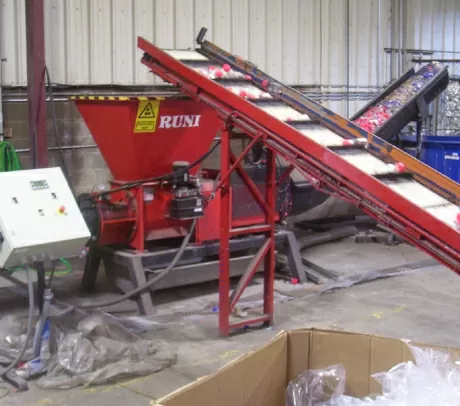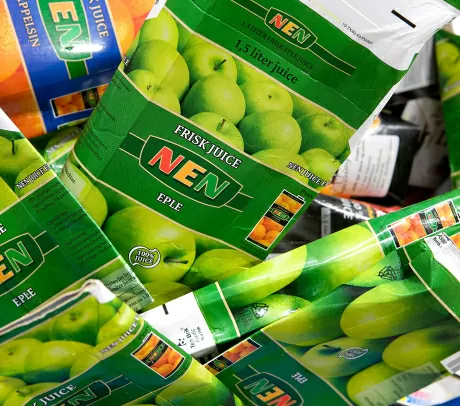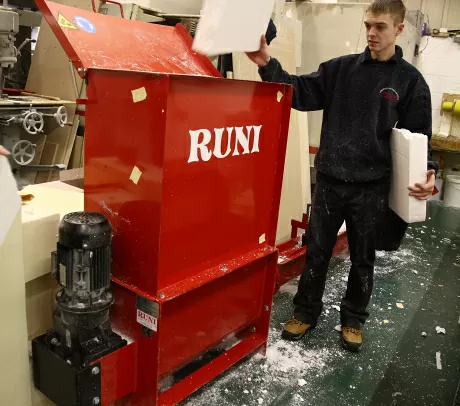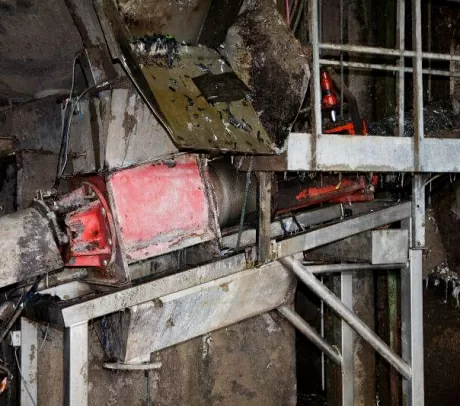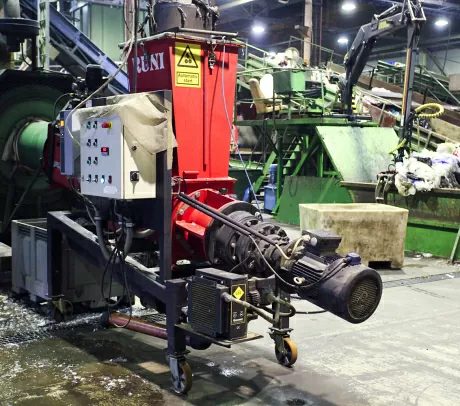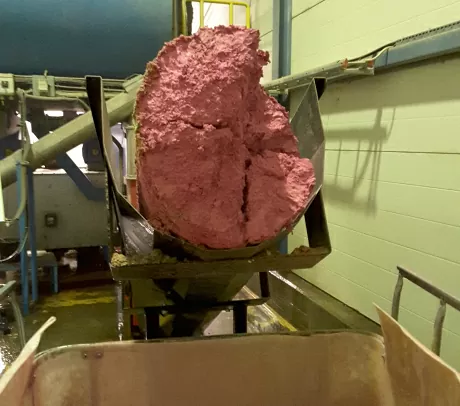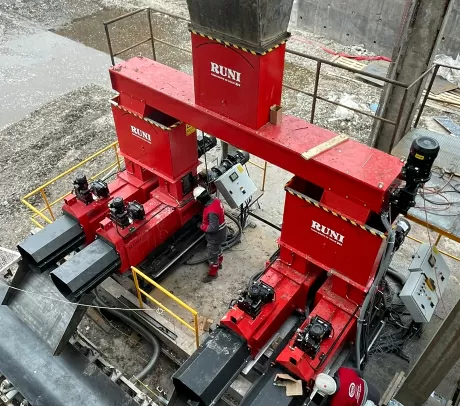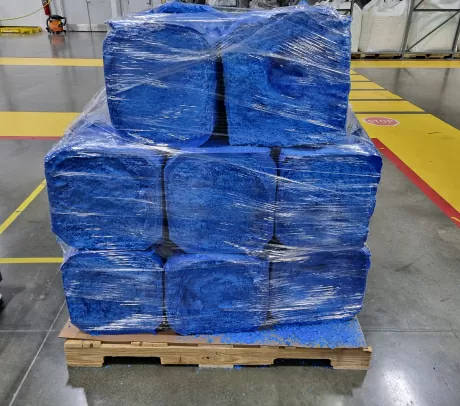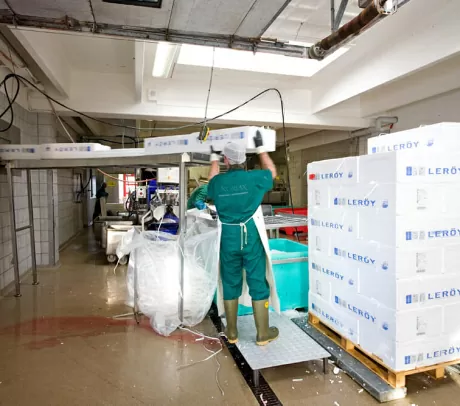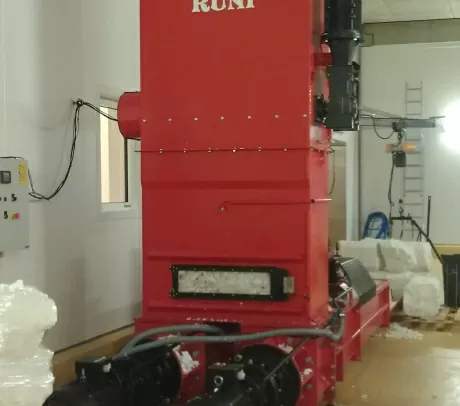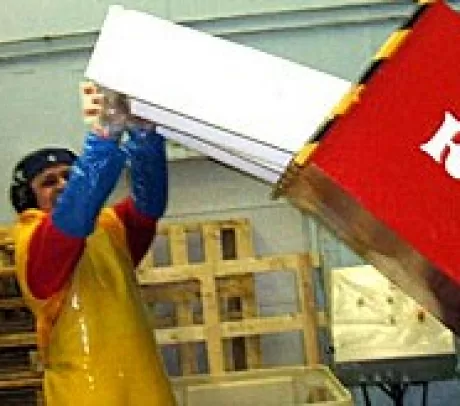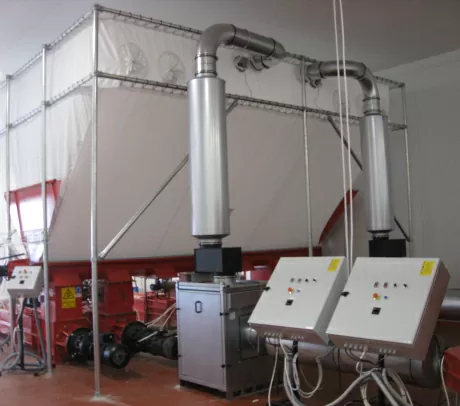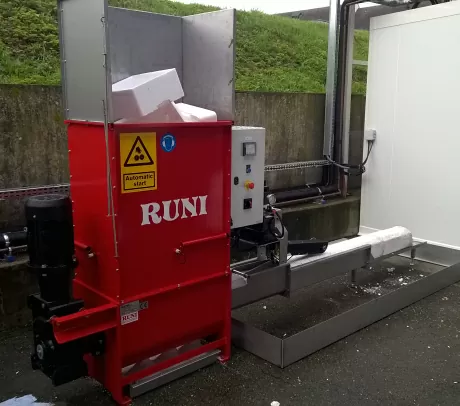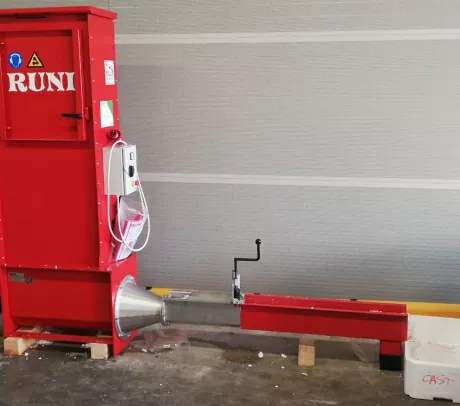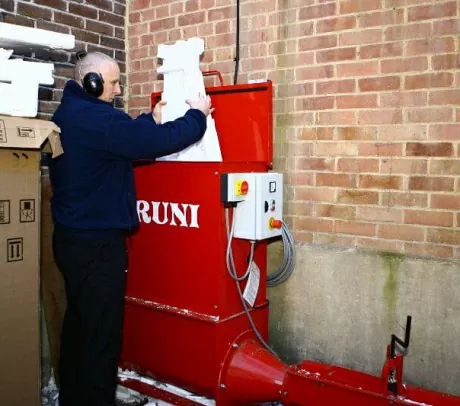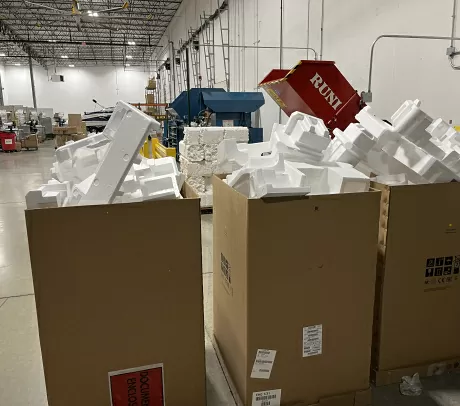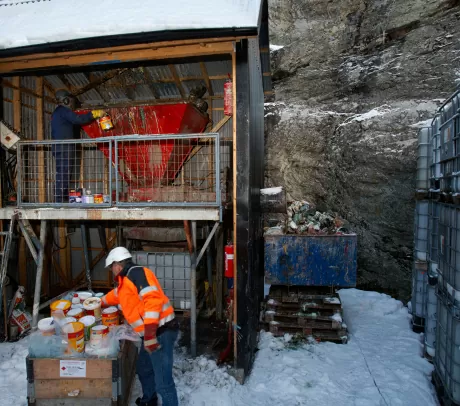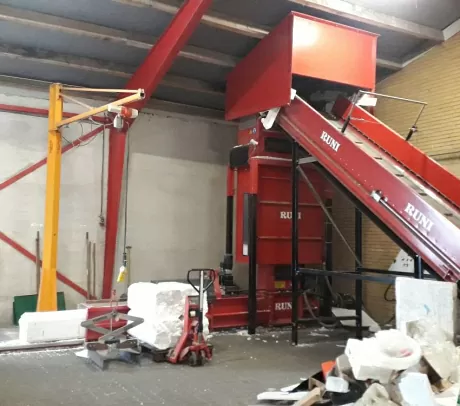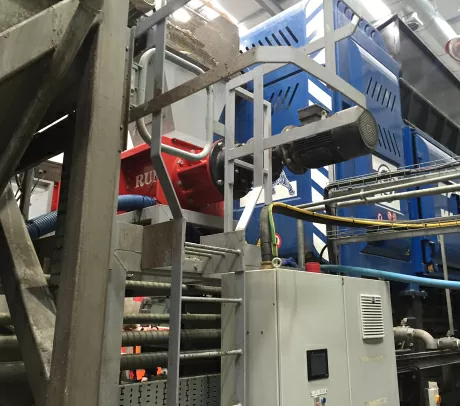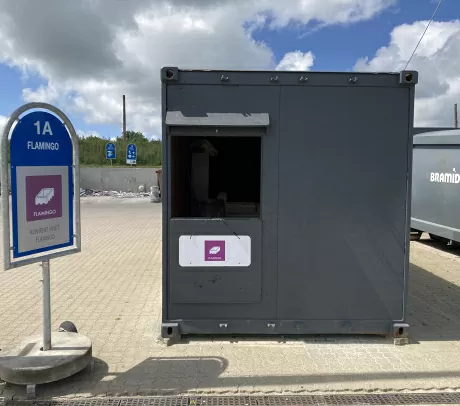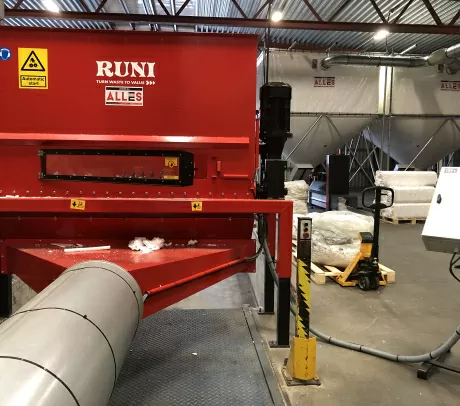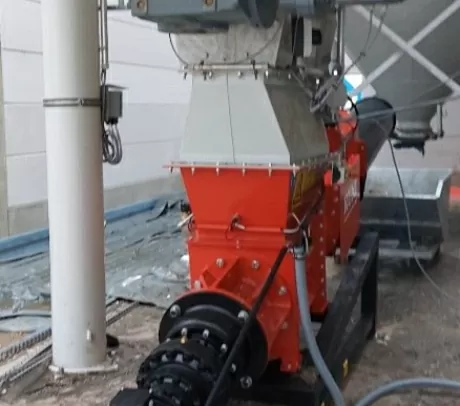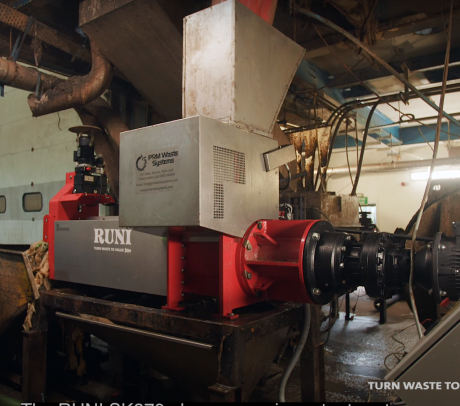Recycling Styrofoam - Guide
Styrofoam, technically called expanded polystyrene (EPS), is a common sight in households and workplaces as it is often used for packaging of a great variety of products. While this material might seem like waste, it actually is 100% recyclable.
If you are wondering how to get rid of your Styrofoam packaging in a proper manner, this guide is for you. It will explain everything you need to know about how to prepare your Styrofoam waste for recycling and present a simple solution, making the process of recycling this bulky waste more accessible and efficient.
Understanding Styrofoam Packaging
When you look at Styrofoam, you'll notice it's made of tiny white plastic beads filled with air. This unique structure is what makes it so useful as packaging.
Made of 98% air, expanded polystyrene is designed to be lightweight and protective, but this also means it takes up enormous space in dumpsters and storage areas and creates a challenge for those who need to dispose of it.
While Styrofoam isn’t biodegradable, its recyclability offers some great environmental and economic benefits when handled correctly:
- Environmental impact: Recycling one kilogram/2 lbs of EPS saves more than two liters/0.5 gallons of oil and prevents it from taking up space in landfills or polluting oceans (The Danish EPS Association).
- Reusability: Recycled Styrofoam can be transformed into new Styrofoam or repurposed into products like picture frames, insulation, or construction materials.

Which Styrofoam Can Be Recycled?
Most clean Styrofoam from packaging can be recycled. The most common recyclable items are the protective packaging from electronics and appliances, foam blocks from deliveries, shipping coolers, and insulation boards. However, not all foam is Styrofoam, and different types of foam need to be recycled separately to avoid contamination.
Handling Styrofoam Before Recycling
To determine if your waste is Styrofoam/EPS and can be recycled as such you can go through the following steps:
- Look for the Recycling Symbol: Most recyclable EPS is marked with the number 6 inside the recycling triangle.
- Check the Texture: Recyclable EPS is rigid and breaks into small beads when crushed.
- Avoid Contaminated Foam: EPS with food residue, tape, or dirt must be cleaned before recycling.
- Exclude Soft Foam: Flexible or colored foam, such as packing peanuts, often cannot be recycled together with EPS.
Where to Recycle Styrofoam
Styrofoam disposal: Can you put it in the recycling bin?
Styrofoam does not belong in your trash can, but unfortunately most curbside recycling programs do not yet accept it. Luckily, EPS recycling options are becoming more widely available.
Do Recycling Centers Take Styrofoam?
Many local recycling centers now have dedicated EPS collection points, however you will need to check with your local authorities to see what the possibilities are in your area, as it differs widely around the world. Here are some options for where you can properly get rid of your styrofoam packaging for recycling:
- Recycling centers: Check availability in your area to see if your local recycle center collects EPS and makes sure it is recycled. For instance, a local recycling center in a Danish village uses a screw compactor to optimize their handling of citizens’ EPS waste.
- Retail Drop-Offs: Some stores, such as electronics retailers, have collection programs for EPS packaging.
- In-House Recycling Programs: Businesses dealing with large volumes of EPS can benefit significantly from investing in screw compactors. These machines compress Styrofoam into dense blocks, saving on storage space, reducing transportation costs, and creating valuable recyclable materials. See how Xerox has optimized their waste management with a screw compactor.
Investing in a screw compactor to prepare Styrofoam for recycling is especially valuable for warehouses, retail stores, manufacturing facilities, recycling centers, and other companies handling large volumes of EPS. What was once a waste challenge can be turned into an efficient operation while ensuring the material can be repurposed to create new products.

Screw Compactors: A Styrofoam Recycling Machine
To address the challenge of high volume and low weight, you could benefit from a screw compactor, also known as a densifier. This machine solves the volume problem by compressing Styrofoam into dense blocks, reducing its size by up to 50:1. To give you an idea: normally, you'd need 50 truckloads to transport loose Styrofoam—98% of which is air—but with a compactor, you only need one truck. This not only reduces the number of trips but also cuts down on the environmental impact of hauling large amounts of air.
The process is simple: clean and dry Styrofoam is fed into the machine, where a powerful screw compresses the material into dense, manageable blocks. In compressed form, the Styrofoam is very easy to store, as the blocks can be stacked on pallets, ready to be picked up by Styrofoam recyclers who repurpose the Styrofoam into new products.
This means you save on transportation costs, reduce storage needs, and you even earn money from selling the valuable blocks—all while contributing to the circular economy by making sure the Styrofoam is recycled and keeping it out of both landfills and incinerators.

Environmental Impact of Recycling Styrofoam
Recycling Styrofoam reduces environmental harm. In landfills, uncompressed Styrofoam takes up a large amount of space, and if not properly disposed of, Styrofoam can cause harm to wildlife and pollute both land and aquatic environments. By compacting and recycling Styrofoam we can save oil, reduce greenhouse gas emissions, and prevent pollution.
Densifying Styrofoam Packaging to Increase Value
Even though that bulky piece of Styrofoam might seem like a hassle to dispose of correctly, it’s actually a valuable resource when recycled properly. By recycling Styrofoam, we take a step toward using our limited resources more responsibly.
Whether you’re a private individual or a business managing large volumes of Styrofoam and whether you're dealing with occasional packaging waste or managing regular volumes, proper recycling of this material is crucial for our environment.
Solutions like screw compactors make recycling both practical and beneficial, turning bulky waste into valuable raw materials for new products.
For more information about Styrofoam recycling machines or to find the right equipment for your needs, explore our range of screw compactors.

Find the Right Compactor for Your Styrofoam Recycling
The quantity of your Styrofoam and manner of feeding determines the most appropriate compactor you can use for your Styrofoam recycling to get optimal results.
RUNI offers Styrofoam densifiers in 4 basic sizes:
SK120: Available in both manual and automatic versions, the SK120 can compact up to 18 kg or 40 lbs of EPS per hour. This makes it ideal for businesses that handle up to 10 tons of EPS annually, such as small retail outlets or industrial operations. The SK120 is typically loaded manually. Read more here.
SK200: The SK200 also comes in manual and automatic versions, with a compaction rate of 45 kg or 100 lbs per hour. This model is perfect for facilities managing between 10 and 30 tons per year. For higher volumes, the SK200 is available in a TWIN version, offering a capacity of 90 kg or 200 lbs per hour, suitable for up to 50 tons annually. These models are typically loaded manually. Read more about SK200 here and SK200Twin here.
SK240: With a capacity of 75 kg or 165 lbs per hour, the SK240 is suitable for locations that process between 30 and 50 tons of EPS annually. It can be fed manually using a 45-degree hopper or with a conveyor belt using a vertical hopper. Read more about SK240 here.
SK370: For higher compaction needs, the SK370 delivers a capacity of 200 kg or 440 lbs per hour and is best suited for businesses handling over 50 tons per year. This model can be fed manually with a 45-degree hopper or via a conveyor belt with a vertical hopper. Read more about SK370 here.
These units are usually in stock and can be shipped on short notice.
If your compaction needs exceed the capacity of the above models, we also offer larger systems. These include multiple compactors combined with an independent shredder and a silo to store granulated EPS before it's fed into the compactors. Read more about our silo solutions here.
If you are curious on how you can recycle other materials, dive into our other recycling guides:
Recycling of:
Besides our machines for compacting we also offer solutions for dewatering of various packagings:
If you need any further information, or you have any questions about the RUNI machines, please fill out the form below. We will contact you as soon as possible.




